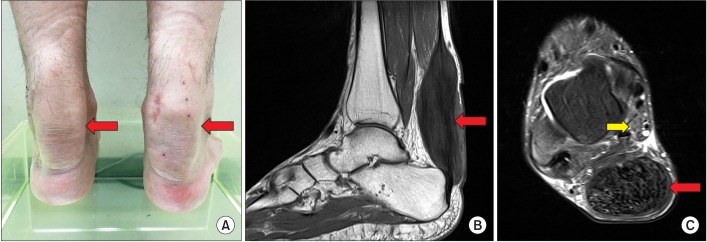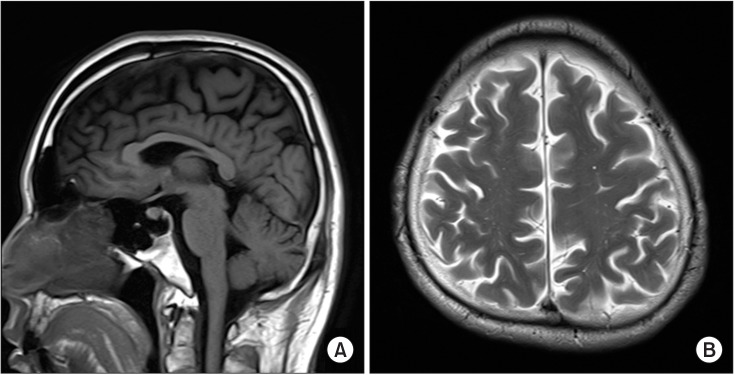Ann Rehabil Med.
2017 Apr;41(2):313-317. 10.5535/arm.2017.41.2.313.
Sonographic Findings of Polyneuropathy Associated With Cerebrotendinous Xanthomatosis: A Case Report
- Affiliations
-
- 1Department of Rehabilitation Medicine, College of Medicine, The Catholic University of Korea, Seoul, Korea. minukkim@nate.com
- KMID: 2389491
- DOI: http://doi.org/10.5535/arm.2017.41.2.313
Abstract
- Cerebrotendinous xanthomatosis is a rare autosomal recessive disease that involves multiple organs, including the peripheral nervous system. The present study is the first to report the ultrasonographic findings of peripheral nerves in a patient with cerebrotendinous xanthomatosis. The patient presented with bilateral Achilles tendon enlargement and foot hypesthesia. Sonographic examination revealed hypoechoic, swollen peripheral nerves with enlarged bilateral Achilles tendons. Since the ultrasonographic findings revealed peripheral involvement, the diagnosis of cerebrotendinous xanthomatosis was established after laboratory and genetic studies along with clinical findings.
MeSH Terms
Figure
Reference
-
1. Nie S, Chen G, Cao X, Zhang Y. Cerebrotendinous xanthomatosis: a comprehensive review of pathogenesis, clinical manifestations, diagnosis, and management. Orphanet J Rare Dis. 2014; 9:179. PMID: 25424010.
Article2. Moghadasian MH. Cerebrotendinous xanthomatosis: clinical course, genotypes and metabolic backgrounds. Clin Invest Med. 2004; 27:42–50. PMID: 15061585.3. Wang Z, Yuan Y, Zhang W, Zhang Y, Feng L. Cerebrotendinous xanthomatosis with a compound heterozygote mutation and severe polyneuropathy. Neuropathology. 2007; 27:62–66. PMID: 17319284.
Article4. Pilo B, de Blas G, Sobrido MJ, Navarro C, Grandas F, Barrero FJ, et al. Neurophysiological study in cerebrotendinous xanthomatosis. Muscle Nerve. 2011; 43:531–536. PMID: 21404287.
Article5. Ginanneschi F, Mignarri A, Mondelli M, Gallus GN, Del Puppo M, Giorgi S, et al. Polyneuropathy in cerebrotendinous xanthomatosis and response to treatment with chenodeoxycholic acid. J Neurol. 2013; 260:268–274. PMID: 22878431.
Article6. Verrips A, van Engelen BG, ter Laak H, Gabreels-Festen A, Janssen A, Zwarts M, et al. Cerebrotendinous xanthomatosis: controversies about nerve and muscle: observations in ten patients. Neuromuscul Disord. 2000; 10:407–414. PMID: 10899446.7. Ohnishi A, Yamashita Y, Goto I, Kuroiwa Y, Murakami S, Ikeda M. De- and remyelination and onion bulb in cerebrotendinous xanthomatosis. Acta Neuropathol. 1979; 45:43–45. PMID: 760364.
Article8. Qrimli M, Ebadi H, Breiner A, Siddiqui H, Alabdali M, Abraham A, et al. Reference values for ultrasonograpy of peripheral nerves. Muscle Nerve. 2016; 53:538–544. PMID: 26316047.
Article




